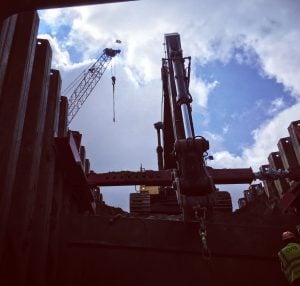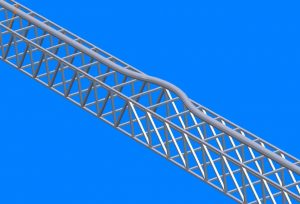How knowledgeable are you? I read an article in a recent issue of American Heritage about the production of a movie on George Washington. A tower was needed for the camera man so the production company shopped for a scaffold tower. According to the article, two companies bid on the job, one at $1,500.00 and the other at $150.00. As would be expected, the production company chose the lower bid. In reading the article, it is inferred that the supplier instructed them on how to assemble the parts and pieces into a tower. The result was a tower the writer refused to climb. This got me wondering about a few things. Why was the higher bid ten times higher than the lower bid? What exactly was in the higher bid that wasn’t in the lower bid? Did the higher bid include erection and dismantle? Or was someone attempting to rip off an unsuspecting customer? On the other hand, maybe the low bid did not include what some people refer to as “all the extras.” These purported extras may include things such as instructions, safety warnings, training, and safety equipment. What would you do in this situation, as either the lessor or the lessee?
My experience indicates that pretty much everybody considers himself an expert about scaffolding, at least until things go wrong. After that, ignorance is claimed and/or responsibility is shifted to another. So, how much do you know? If you manufacture, rent, sell, erect, use, inspect, or conduct training, take this test and see how you do. The answers are elsewhere in this newsletter (it forces you to read the entire newsletter!)
Assume the US Federal Scaffold Standards apply.
True or False:
- In theUS, scaffolding safety standards first occurred when OSHA started in the early 1970”s.
- It is not the responsibility of the employee to be trained.
- It is only the responsibility of the employer to train employees.
- A competent person is determined by OSHA.
- Bamboo (wood) scaffolds are not allowed inNorth America.
- Any licensed professional engineer can design scaffolds.
- Scaffold frames are generally stronger than tube and coupler scaffolds.
- Tube and Coupler scaffolds aren’t used anymore.
- Only tubular welded frame and tube and coupler scaffolds must be designed by a qualified professional engineer for heights above 125 feet.
- Scaffolds can only be erected by workers who own or rent the scaffold.
- Scaffold erectors must be trained and experienced.
- ANSI stands for the American National Scaffold Institute.
- OSHA stands for safety in the workplace.
- All frame scaffolds have approximately the same strength.
- The competent person determines safe fall protection for erectors.
- A qualified person and a competent person are the same thing.
- You are an engineer if you design scaffolds.
- Bracing does not affect the capacity of a scaffold.
Finish the sentence:
- Toprails of a guardrail system must withstand a force of:
- All scaffolds must have a safety factor of at least:
- For US Federal Standards, the height of the toprail above the platform is:
- Toeboards, when used, shall have a height of at least:
- The first step of scaffold access can be no more than:
- TheUSfederal OSHA scaffold regulations for construction are in Subpart:
- The allowable leg strength of the scaffold frame you are using/renting is:
- Scaffolds can be free standing if the height to base ratio is:
- Unless secured, scaffold planks must have a minimum overhang of:
- Unless secured, scaffold planks 10 feet long, can have a maximum overhang of:
- An access rest platform shall be provided at least every:
- The maximum horizontal and vertical tie spacing for supported scaffolds is:
- Suspension rope on suspended scaffolds shall have a safety factor of at least:
- The minimum strength of an undersigned fall protection anchor is:
- Casters on rolling towers must always be:
- Retraining is required when:













